
The Steelhead Genetics Project (SGP) is a cooperative research project that seeks volunteer angler participation with sample collections. The SGP will provide critical information to advance rehabilitation efforts for Steelhead in the Minnesota waters of Lake Superior.
Anglers interested in participating in this project must be experienced steelhead anglers and qualify for a special scale collecting permit. You can contact the MN DNR if you would like to learn more about the requirements or discuss participation.
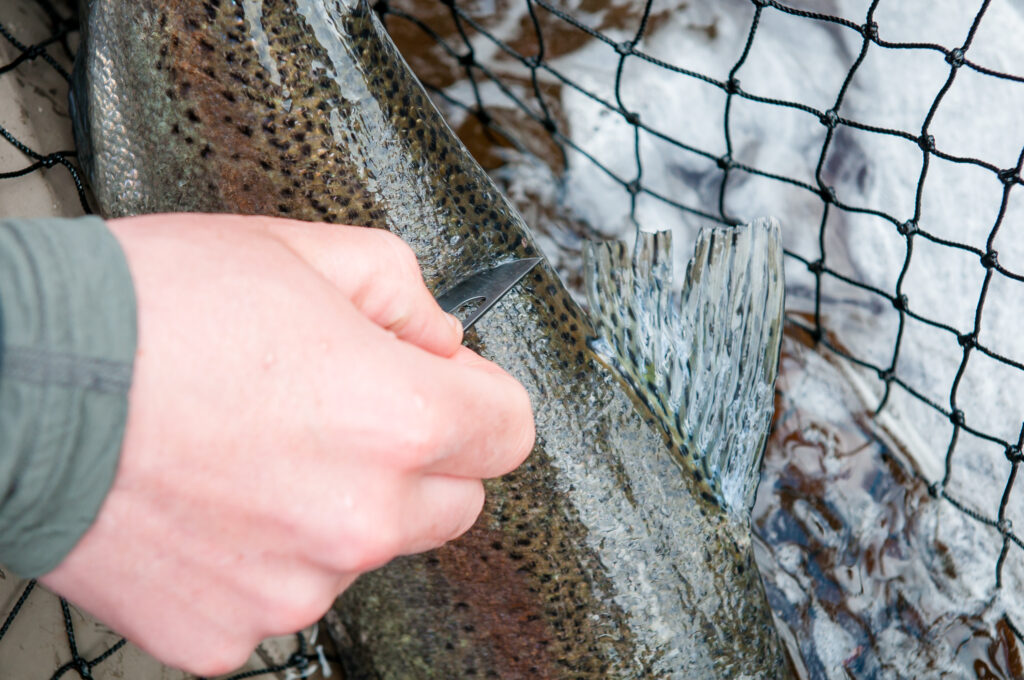
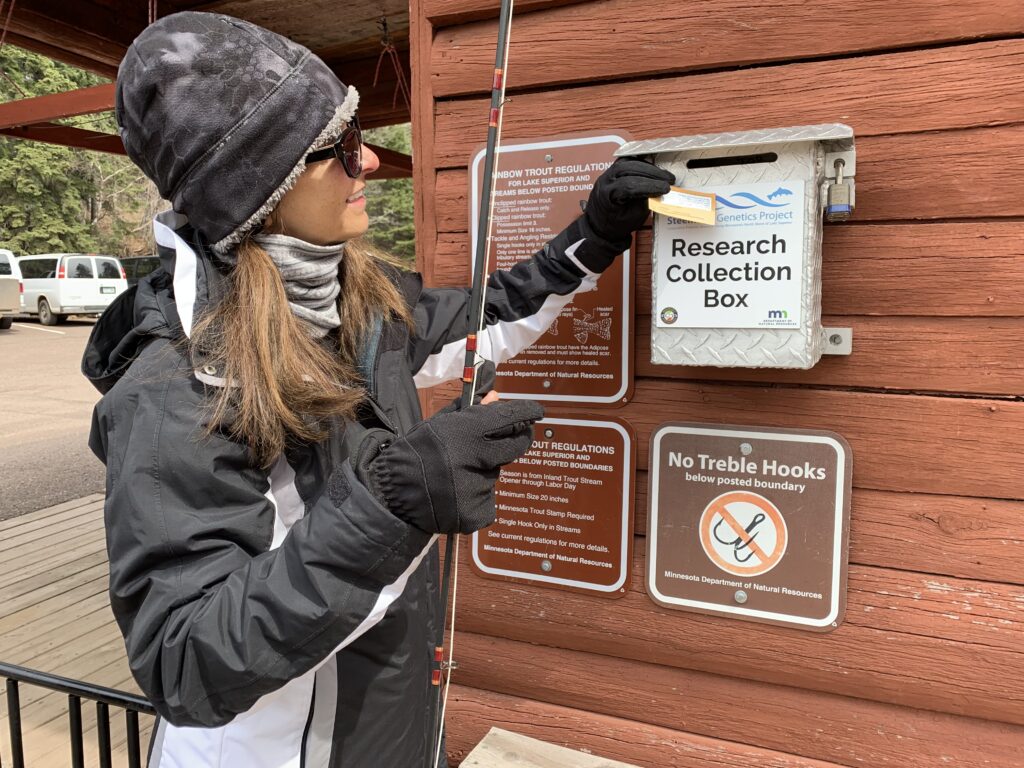

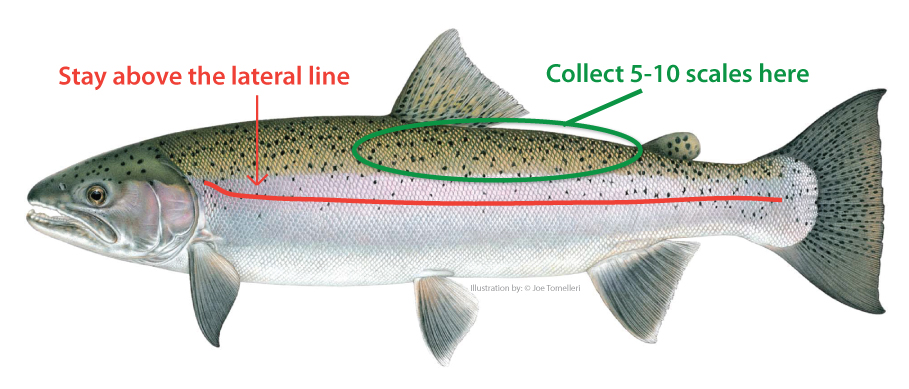
Project Objectives:
1. Evaluate hybridization between hatchery-raised Kamloops Rainbow Trout and naturalized (wild) Steelhead.
2. Examine the utility of genetics to identify adult Steelhead that were stocked as fry and determine their contributions to the adult catch in the North Shore spring fishery.
3. Determine strain composition, genetic variation and structure of wild Rainbow Trout among North Shore Rivers using genetic markers.
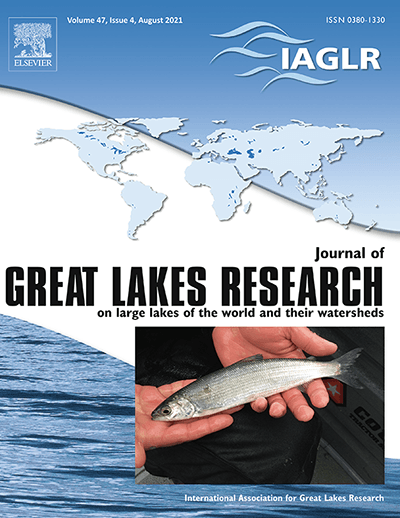
MARCH – 2020 RELEASE
“We have documented introgression of hatchery kamloops in naturalized steelhead populations in western Lake Superior that contrasts with the lack of evidence for kamloops introgression 25 years earlier (Kreuger et al., 1994). Kamloops descendants were identified in age-0 and adult samples from throughout Minnesota’s shore and a nearby Wisconsin tributary. The finding of kamloops introgression into Minnesota steelhead population and potential impacts on other jurisdictions contributed to the decision to discontinue and replace the kamloops stocking program.”
Why the Minnesota DNR Manages for Steelhead
Like non-native pheasants being introduced to Minnesota in 1916, non-native steelhead were introduced to Minnesota waters of Lake Superior in 1883 and rapidly became a popular sport fishery. Steelhead adapted well to the freshwater environment, established self-sustaining populations, and became part of the Lake Superior food web and ecosystem. In the 14 decades since their introduction, the steelhead fishery has remained a very popular sport fishery backed by a strong coalition of angling stakeholder groups (again like pheasants) and, as such, the Minnesota DNR manages them as they would any other sportfish.
Most North Shore tributaries to Lake Superior have a waterfall barrier close to the lake meaning there is only a small stretch of river available for any potamodromous (migrate from freshwater lakes to freshwater rivers to spawn) fishes to spawn. In fact, of the 16 “highest quality” North Shore tributaries excluding the Knife River there are only 19.3 river miles of habitat available for spawning below waterfall barriers – much of which is lower quality compared to cold headwater tributary habitats. The Knife River is unique in that near its mouth the Minnesota DNR operates a catch-and-sort fish trap that allows steelhead access to over 56 miles of upstream river habitat for spawning and rearing, making it by far the most important tributary for steelhead and other potamodromous fishes including native Coaster Brook Trout which have also been caught at the Knife River Trap and passed upstream.
It is the opinion of the Minnesota DNR that although steelhead may not be native to Minnesota waters of Lake Superior, they have been an established part of the food-web and ecosystem for over 142 years and must be part of the Lake Superior and tributary management strategy, especially aquatic habitat improvement projects, for what is good for steelhead will also be good for native species like Brook Trout. The MNDNR Lake Superior office is currently researching specific habitat use of Brook Trout and steelhead in the Knife and Stewart River systems to better understand the thermal preferences for each species and how much habitat overlap might exist which hopefully will provide insight into how the two species interact. Coldwater habitats on North Shore tributaries to Lake Superior are facing numerous threats including warming waters, more frequent severe storms, droughts, natural and man-made barriers to migration, and loss of riparian shade from forest pests and disease. Terrestrial and aquatic habitat improvement projects have been very important in combating these threats and will continue to be critical management strategies for all fish species into the future.
Studies, Plans, & Articles
Click the PDF links below to view/save documents
- Rainbow Trout Management Plan
- SGP answers to hybridization with Kamloops
- Spawning interactions of hatchery and naturalized rainbow trout
- Evaluation of Madison, Donaldson, and Kamloops strains
- Influences of hatchery vs. wild fish – Three papers
- Fitness study of hatchery & hybrid rainbows compared to naturalized
- Rainbow Trout Fact Sheet
- Simulating Effects of Nonintrogressive Hybridization…
- Study – Trout fishing in MN with emphasis on Lake Superior Tributaries
- Comparative Survival of Naturalized Steelhead and Feral Kamloops
- Volunteer Angler Update – 2018
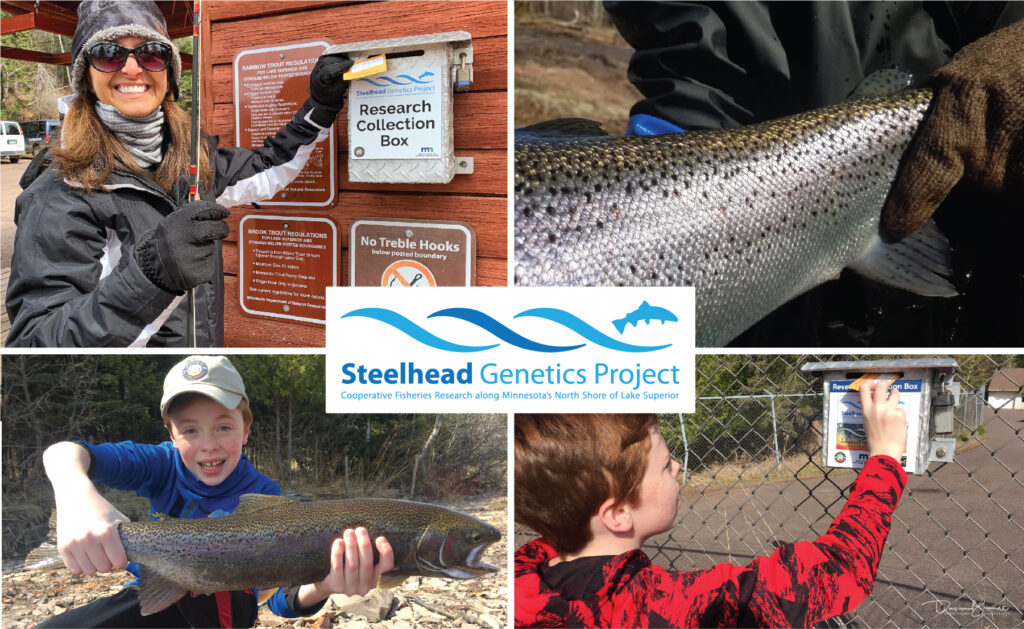
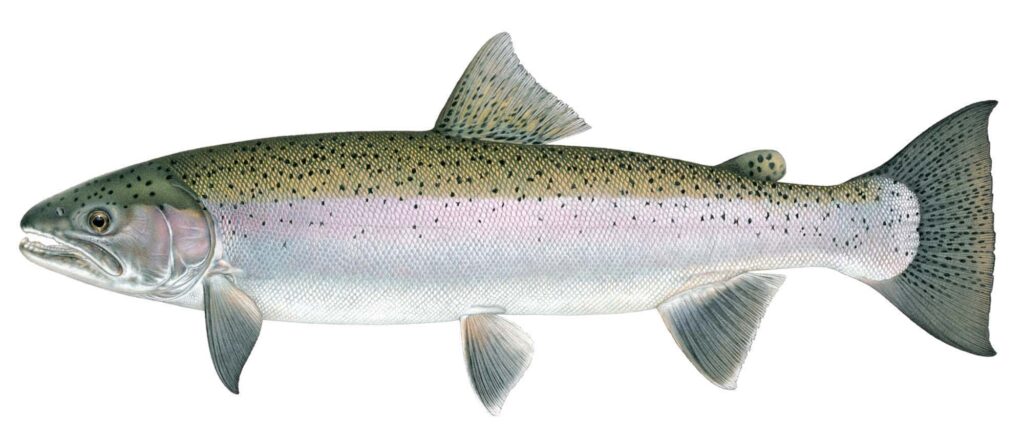
The Steelhead illustrated here is so incredibly scientifically accurate, right down to the scale size, placement, and amount. This illustration and hundreds more have been beautify created by Joseph Tomelleri. CLICK HERE to learn more about Joe, his passion, and how to purchase your favorite image.
